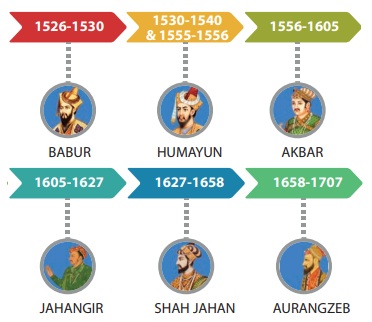The Mughal Empire | Term 2 Unit 2 | History | 7th Social Science - Jahangir (1605–1627) | 7th Social Science : History : Term 2 Unit 2 : The Mughal Empire
Chapter: 7th Social Science : History : Term 2 Unit 2 : The Mughal Empire
Jahangir (1605–1627)
Jahangir (1605–1627)
Akbar was succeeded by Prince Salim,
his son through a Rajput wife, who was also namedNur-ud-din Muhammad Jahangir (Conqueror
of the World). Jahangir was more interested in art and painting and gardens and
flowers, than in running the government.


So Jahangir’s wife, Mehr-un-nisa, known
as Nur Jahan, was the real power behind the throne. Jahangir carried on to some
extent his father’s traditions. The toleration of religions of Akbar’s time continued
in Jahangir’s time.

But Jahangir ordered the execution of
Sikh leader Guru Arjun (or Arjan) for helping his rebellious son Khusrau, who contested
for the throne. This resulted in a prolonged fight between the Sikhs and the Mughals.
As a result of this confrontation, the Mughals had to lose control over the trade
routes to Afghanistan, Persia and Central Asia. The loss of Kandahar exposed India
to invasions from the North-West. Ahmednagar, though conquered by Jahangir, remained
a source of trouble throughout his reign.
Jahangir granted trading rights to the Portuguese and later to the English. Thomas Roe, a representative of King James I of England, visited Jahangir’s court and this agreement paved the way for the British establishing their first factory in Surat.
Related Topics